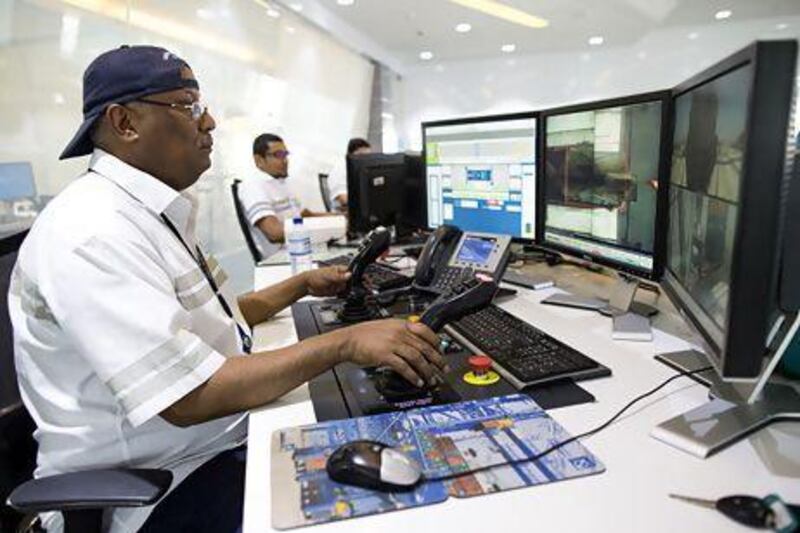Khalifa Port plans to add three shipping lines to its portfolio by the end of the year to expand its international network.
The facility, which completed a year in operations on Sunday, already has 18 lines connecting it directly to 50 ports from South-East Asia to North America, including Singapore, Hong Kong, Port Said at Suez Canal, and Tangiers at the Strait of Gibraltar.
In its first year of operations, it has handled 830,110 TEUs (twenty-foot equivalent units) with 78,632 TEUs in August alone.
"I would like to add more lines to connect to northern Europe and Africa," said Martijn Van de Linde, the chief executive of Abu Dhabi Terminals, which manages and operates Khalifa Port Container Terminal.
He expects the network to expand to 75 ports, including those in Rotterdam, Antwerp, South Africa and West and East Africa, in the next year.
The sluggish European economy, however, is expected to affect port operations around the world, he said.
There are no plans to increase berth prices at the port as the global industry faces continuing cost pressures.
"Our prices are 20 per cent below the average price of ports around us," Mr Van de Linde said.
It costs about Dh400 to import a container at Khalifa Port. Construction materials, food and agricultural products, animal feed and hay come into the emirate through the port. While cargo mainly comes from the Mediterranean region, Far East and United States, exports head towards China and northern Europe.
Khalifa Port currently handles about 20 sailings and 20,000 containers a week, which is a 12 per cent year-on-year increase. The volume handled weekly is expected to go up to about 35,000 containers in the next year.
It also services 1,500 lorries every day, with a turnaround time of 15 minutes, placing it on a par with other ports.
Cargo growth is driven by exports such as aluminium, plastic and steel.
"Emal is doubling its capacity from 1 million tonnes to 2 million tonnes and [plastic manufacturer] Borouge has increased capacity to more than 3.5 million tonnes of plastic productionper year, so these industries that export drive a lot of growth," Mr Van de Linde said.
"Volume of cargo handled will grow past 1 million TEUs this year, and touch 2.5 million TEUs in five years for Khalifa Port."
The port has taken over all container services from Mina Zayed, which currently handles bulk cargo such as pipes and cement, and cruise ships.
The civil war in Syria and other regional flashpoints have hit regional trade, while sanctions against Iran have also had an impact.
"Right now established liner movement with Iran has stopped," Mr Van de Linde said.
The global freight market is struggling due to the sluggish economy and the Khalifa Port chief expects it to remain so for the next year.
The port, however, will expand its capacity with three more ship to shore cranes, which move containers between ship and dock, in December, and six more automatic static cranes in October. It currently has six ship to shore cranes, and 30 automatic static cranes.
Under-construction factories, which are designed to be processing manufacturing hubs in Kizad, will also drive the port growth.
In the long run, Khalifa Industrial Zone Abu Dhabi and Khalifa Port are expected to generate 15 per cent of the emirate's non-oil GDP by 2030.
In the first phase, the port has capacity for 2.5 million TEU containers with an ultimate capacity for 15 million TEU containers.





